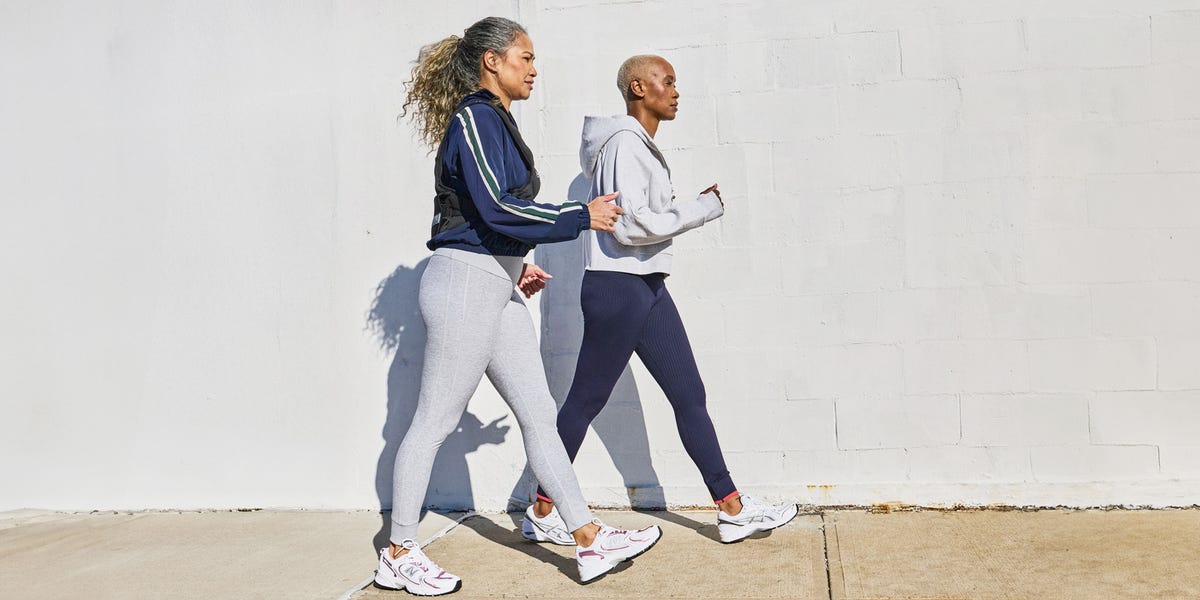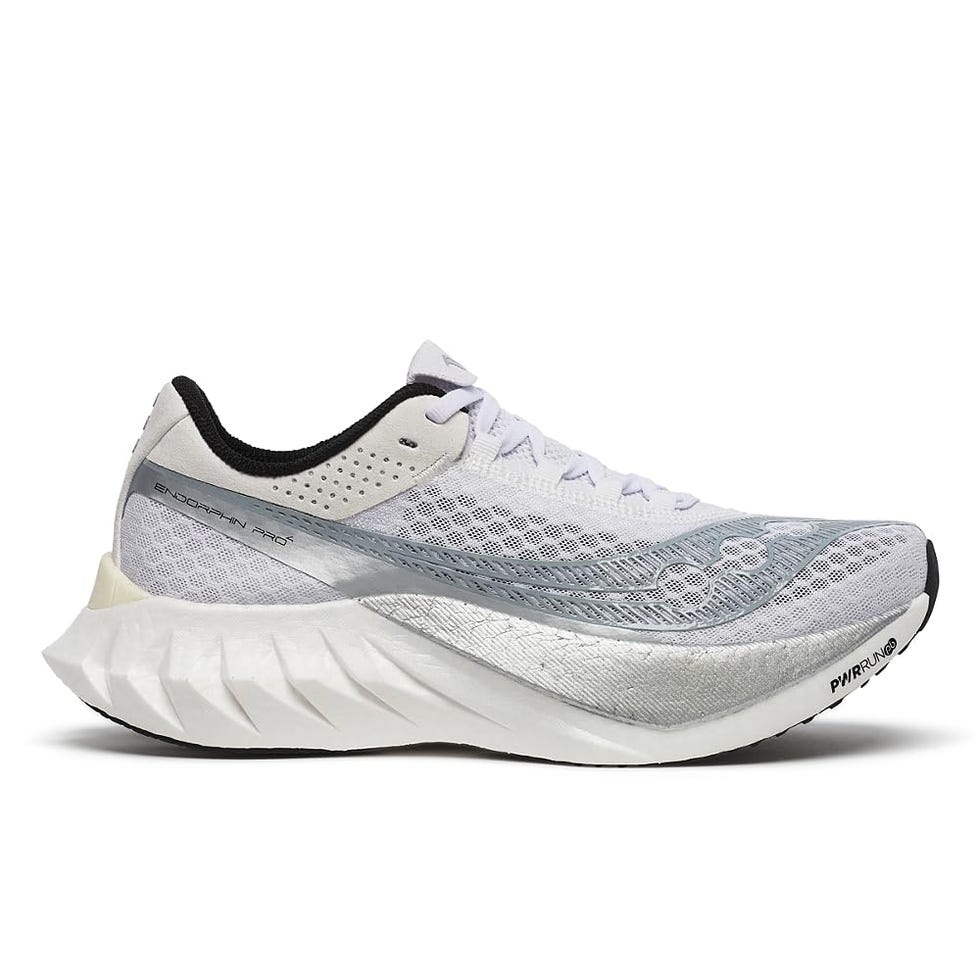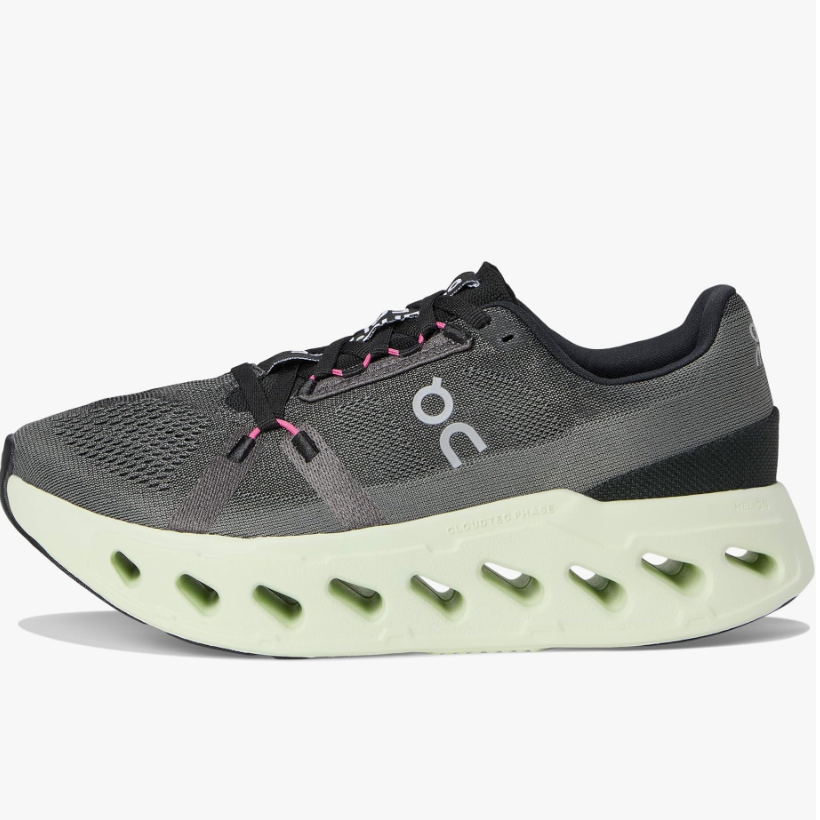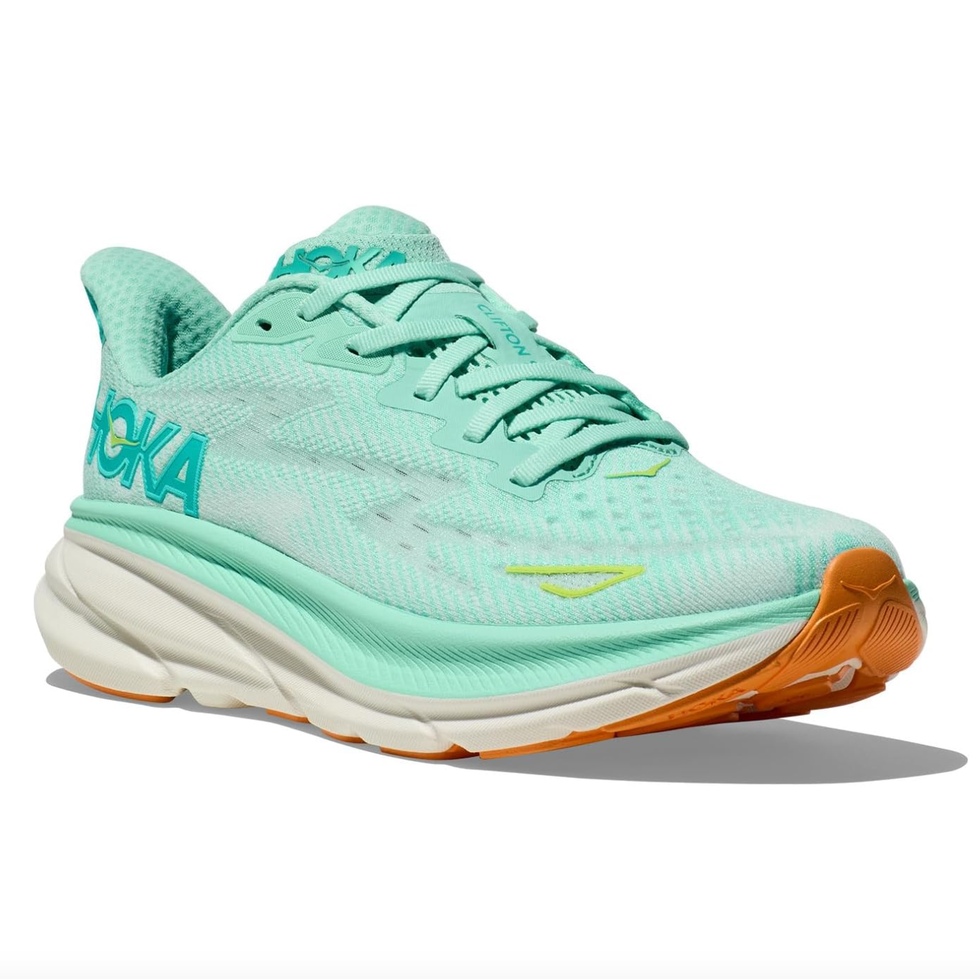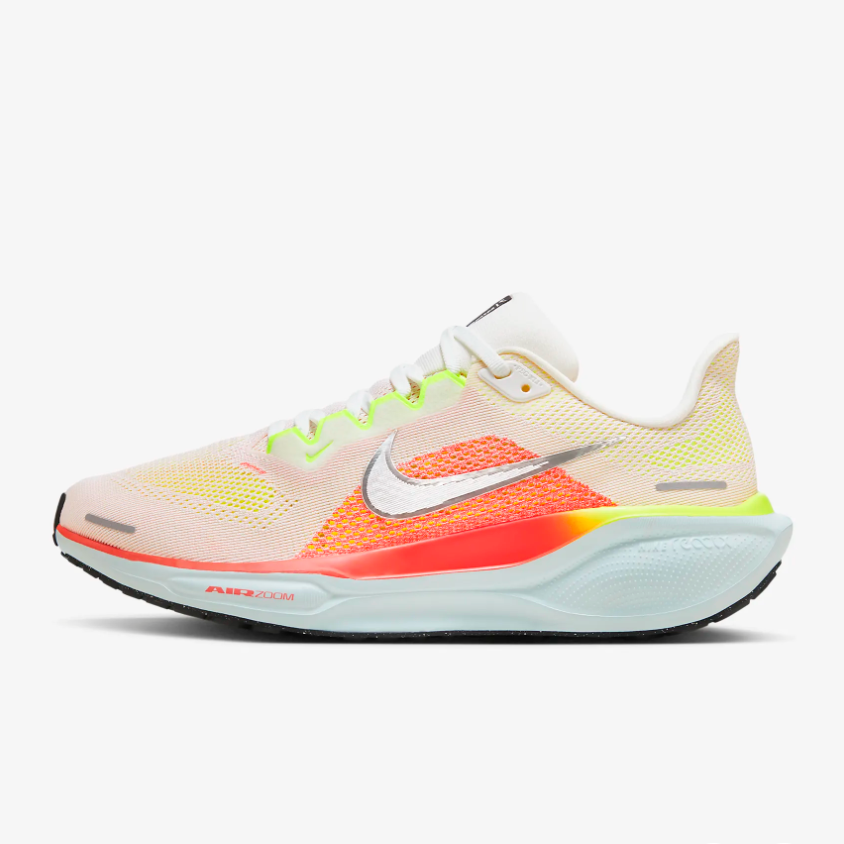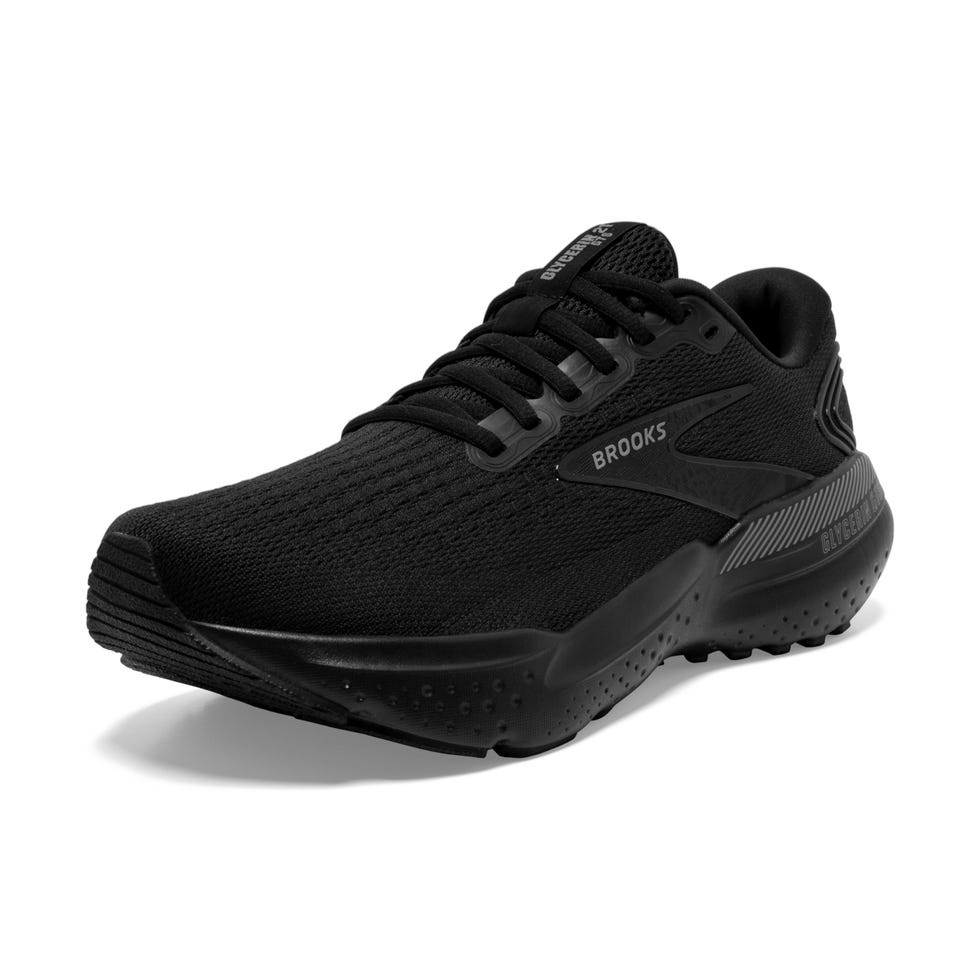Everywhere you look, someone (like me) is raving about walking on an under-desk treadmill or is marathon training. The hype is real, and all you need is a good pair of shoes. However, choosing the right option can be a tedious task.
Not all shoes on the market are a one-size-fits-all for everyone when racking up miles. Some styles should only be used for performance, while many running and walking kicks can spill into lifestyle wear for their incredible comfort, fit, durability, and (my favorite reason) gorpcore vibe. But, of course, each shoe is unique and can serve a different purpose. Before getting technical, step one is making sure your footwear suits your activity and intensity, which begs the question: Are walking shoes and running shoes able to sustain the same impact and movement?
“A shoe designed for running often has more cushion because the impact forces from running are much greater than the impact forces from walking,” says Milica McDowell, a doctor of physical therapy and owner of Clearwater Physical Therapy in Bozeman, MT. “This isn’t necessary for walking and reduces your feel of the ground, which is problematic for those with any balance issues or previous falls.”
Having the proper shoes is important to help prevent injury. To help you make a decision, I enlisted the help of physical therapists and applied my experience as a fitness editor, longtime runner, and power walker to examine if running shoes are good for walking. Here’s what you need to know.
Is it okay to wear running shoes for walking?
Running shoes can be appropriate for walking, but with a few caveats: If they’re not designed for racing, for trails, or have carbon fiber plates wedged in the sole (this provides massive bounce and speed during runs). “Many times they have a very tight fit for higher performance, a narrow toe box, or are highly supported in the arch, which are features a lifestyle walker does not need,” says McDowell.
As a runner, I notice many of today’s models are designed with a rocker sole, which is meant to propel you forward. I find it essential to try to gain speed. McDowell says it’s not absolutely necessary “due to the slower cadence and pace of walking, and the different contact of the two patterns.” For context, cadence is how many steps you take per minute, while pace is how fast you’re going per mile. But, that doesn’t mean a rocker shape doesn’t offer any benefits to walking—it can add stability and support for those with collapsing arches (flat feet).
The maximum cushioning of most running shoes can also be problematic for walkers because it can lead to instability. As Lalitha McSorley, a physiotherapist at Brentwood Physio in Calgary, AB, Canada notes, the “shoe may not support the natural heel-to-toe stride of walking.”
As much as I like to reserve my running shoes for training (you should replace them every 300 miles), I do have a few on hand that I strictly use for walking because I love how they feel on my feet. Many models offer adequate support and cushioning that mimics a cradling sensation, which is beneficial when walking high mileage. When seeking a walking shoe, McDowell recommends these four features: a wide toe box, a thin and flexible sole, a low(er) cushion, and less stack height, which can all be found in running shoes depending on the model.
Read more: Best Running Shoes
Is it okay to use walking shoes for running?
Walking shoes are generally not ideal for running, given their lack of cushioning. Unlike running shoes, they’re not designed to spare your joints from the impact of pounding pavement. As someone who has had multiple knee and hip injuries from running, I advise against it.
“I often tell my patients that running is really high impact—think of the force of your entire body weight coming through your feet when you jump. Now add that every time your foot strikes the ground when you are running,” says McSorley. ”This is why running shoes often have extra cushioning in the heel and a more flexible toe box.” Specifically, maximum cushioned shoes are super popular among runners, such as the Hoka Bondi 9. As for flexibility, both walking and running shoes should have at least some for added comfort.
Read more: Best Walking Shoes
Is there a difference between a running shoe and a walking shoe?
While some running shoes can double as walking shoes with a few exceptions, cushioning, heel-to-toe drop, stack height, flexibility, and arch support are all key differences that are important when considering the best shoe for you.
Cushioning
Generally speaking, running shoes are high-cushioned to absorb impact and reduce strain when striking the ground while walking shoes should have less to provide more ground feel for increased stability. The cushioning types in walking and running shoes are typically the same, it’s just the amount that differs. EVA foam is super common and is extremely light, durable, and plush for proper shock absorption.
Heel-To-Toe Drop
The heel-to-toe drop is the difference in cushion height between the heel and forefoot. For runners who land with their heels first, they would benefit from a higher drop (10 to 12 millimeters). Specifically for running, lower drops cause more impact on the ankles, while higher drops put more stress on the knees and hips. To distribute impact evenly, five to six millimeters is the sweet spot for mid-foot strikers. A drop between four to eight millimeters is optimal for walking depending on the support needed and your foot strike.
Stack Height
Stack height means the amount of foam or material between your feet and the ground. For a walking shoe, there should be less stack height in the heel and even cushioning throughout to prevent instability—aim for at least 30 millimeters to absorb impact. For running, it largely depends on your needs. Many shoes start as low as 20 millimeters, while maximum cushioned styles can reach up to 50.
Flexibility
Both running and walking shoes should have flexibility, but the amount is a personal preference and depends on needs specific to your feet. For example, those with flat feet would benefit from a stiffer, less flexible shoe for added stability when running and walking. A stiffer shoe is also popular for racing or speed training given its responsiveness, but I prefer a balance of flexibility and firmness to maintain comfort, such as the On Cloudmonster 2. Pay attention to your running gait when wearing both shoes to find what works best for your feet.
Arch Support
“Walking shoes are typically designed to be more rigid in the arch [firm] and offer better heel-to-toe support, which can help improve proper walking posture and reduce stress on your knees, hips, and lower back,” says McSorley.
As for running shoes, it greatly depends on your feet and running gait. For example, those who overpronate (have collapsing arches) benefit from firm support for stability, while those with neutral gaits or underpronators benefit from more cushioning in the arch.
Overall, it’s important to determine your arch type (flat, medium, and high) before choosing a walking or running shoe. An easy way to do this is by looking at your arch from the side to see how inverted it is. Another simple test is to dip your foot in water and step onto a piece of paper. If you see your entire foot, then you have flat feet. A high arch will barely be visible, while a normal arch will show half your foot.
Does walking break in running shoes?
As a runner for almost two decades, I have a strategy that has helped me break into a new pair of runners. Before taking new running shoes for a spin, I wear them around the house. Doing this lets me see if the fit is optimal to avoid blisters—a runner’s worst nightmare. Plus, as someone with bunions, I can tell if they’re too narrow and if the fabric rubs against the sides of my feet to prevent pain. When you finally run in your new pair, it can take a few times for them to form to your feet, so start with low mileage runs.
What are our favorite walking and running shoes?
Our editors have been testing the best walking and running shoes for years, so we have some stellar recommendations based on hundreds of miles and steps logged, including top picks from our 2025 Women’s Health Fitness Awards.
Meet The Experts
Shop Our Favorite Walking And Running Shoes
Best Long-Distance Running Shoes | Best Skechers For Walking | Best Motion Control Shoes | Best Treadmill Walking Shoes | Best Walking Shoes For Flat Feet | Best Walking Shoes For Women | Best Cross Training Sneakers | Best On Cloud Shoes For Walking | Most Comfortable Shoes | Walking Shoes For Women Over 50 | Best Nike Walking Shoes
Nicolette Accardi is the Fitness Commerce Editor at Women’s Health with a specialty in running content. She likes to chase her next best time by testing out shoes and other running gear while training for races. Nicolette studied journalism and health sociology at Rutgers University. She has written for NJ.com, VICE, Rolling Stone, NBC News Select, and U.S. News & World Report.
Read the full article here


